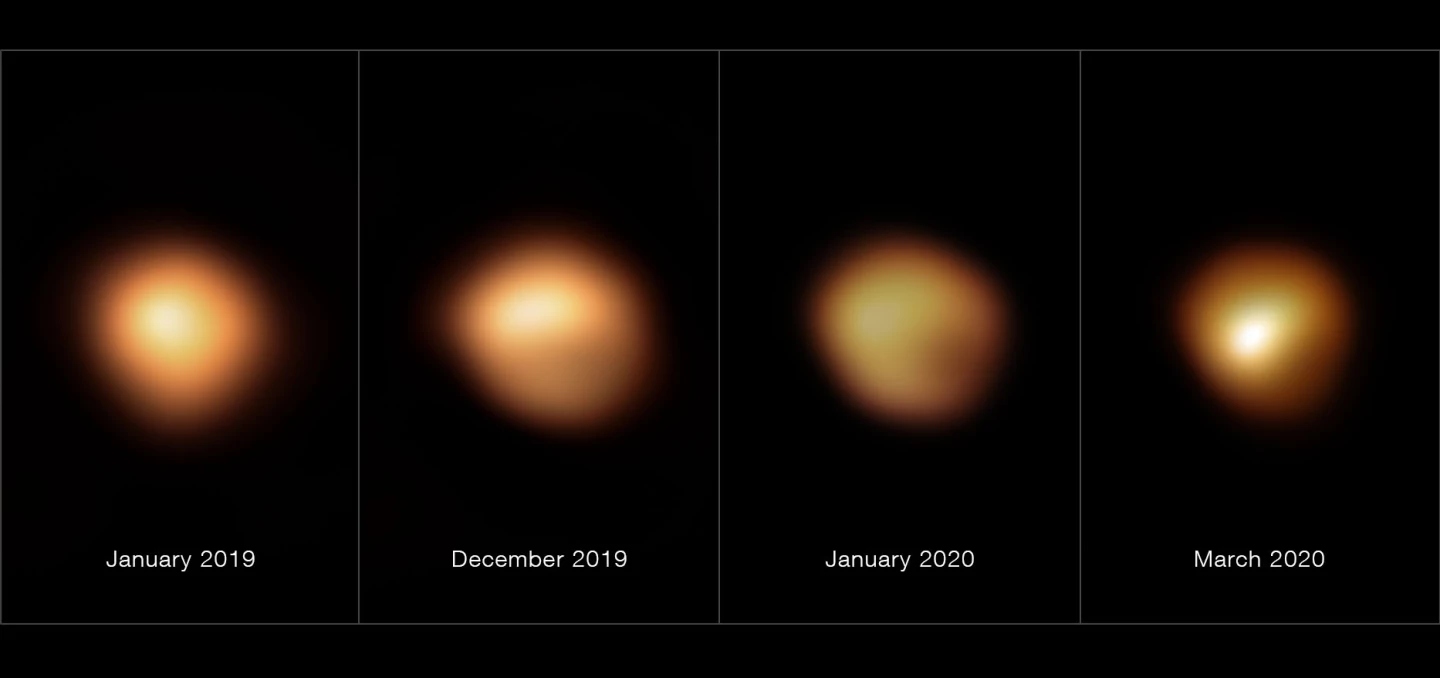Astronomers say they’ve closed the case on the mysterious and unprecedented dimming of the supergiant star Betelgeuse in 2019 and 2020. A new study says that the event was caused by a combination of a big dust cloud and a drop in temperature.
Betelgeuse is one of the brightest stars in the night sky – or at least, it usually is. Beginning in late 2019, the star dimmed to less than a third of its usual brightness, sparking speculation that it was about to explode in a supernova. But just as strangely, by April 2020 Betelgeuse had returned to its regular light levels.
Exactly what caused the dimming was unknown, but the main ideas were that it was either a cloud of dust blocking the light, or huge cool regions called star spots that dim the surface. Now, astronomers from the Center for Astrophysics have analyzed images of the star and concluded that it was both.

The images were taken by the Very Large Observatory in January and March 2020, at the height of the dimming episode, and were compared to others snapped in January and December 2019. All up, these presented an intriguing look at how the surface was changing over time.
The researchers explain that before the dimming began, Betelgeuse expelled a big bubble of gas that drifted away from the star. Soon after, a star spot began to form on the surface, cooling down the region. That cooling caused the heavier elements like silicon to condense into dust. The combination of that dust and the star spot would have been responsible for the observed dimming.
The observations match those of a previous study, where astronomers using Hubble saw a clump of hot, dense material traveling at around 200,000 mph (322,000 km/h) after being ejected from Betelgeuse’s surface, a few months before the dimming began.
"With Hubble, we could see the material as it left the star's surface and moved out through the atmosphere, before the dust formed that caused the star to appear to dim,” says Andrea Dupree, an author of both studies.
Another recent study reached a different explanation for a follow-up dimming event in mid-2020, which was less pronounced than the first. This time, the team says that pressure waves across the surface could have created pulsations that dimmed Betelgeuse. Intriguingly, this model also suggests the star is smaller but closer to Earth than we thought.
Astronomers will no doubt continue to watch Betelgeuse closely, but sadly it looks like we might have to wait another 100,000 years or so before we see any celestial fireworks from the volatile star.
The new study was published in the journal Nature. The dimming can be seen in the video below.
Source: Center for Astrophysics





